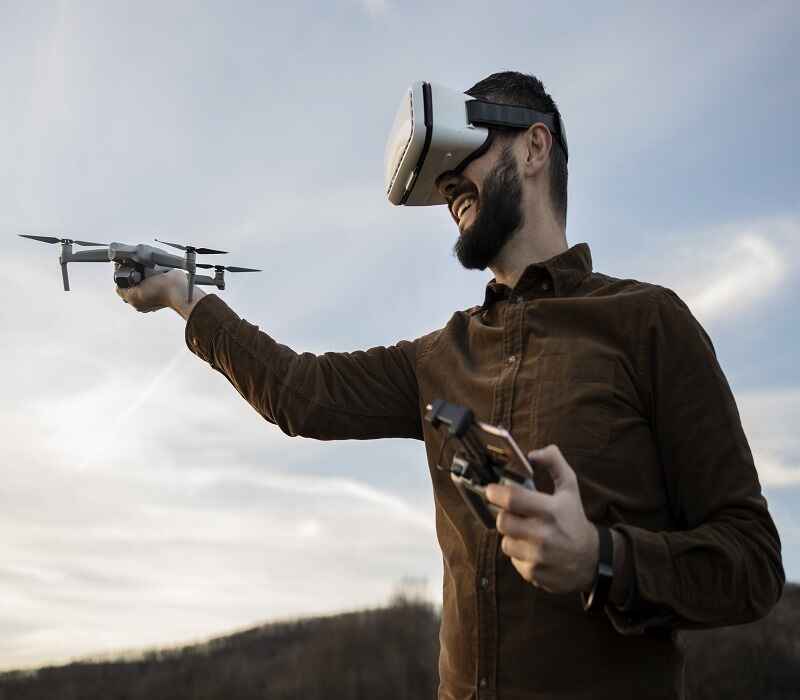
Artificial intelligence (AI) has long been a subject of fascination in science fiction, often depicted as humanoid robots with advanced cognitive abilities. Over the decades, what once seemed like distant speculation has become a reality. AI avatars, in particular, have seen remarkable advancements, transforming from rudimentary digital characters into sophisticated, interactive entities used in entertainment and gaming. This article delves into the evolution of AI avatars, exploring their roots, technological progress, and impact on the industry.
The Early Days of AI Avatars
The concept of AI-driven avatars dates back to early video game development and animated storytelling. In the 1980s and 1990s, gaming pioneers introduced characters with basic programmed responses and limited interactivity. These avatars were primarily controlled by game developers, lacking the dynamic adaptability we see today.
In cinema and animation, digital characters began gaining prominence with films like Tron (1982) and The Terminator (1984), hinting at a future where AI-driven entities could simulate human-like behavior. However, the technology at the time was still in its infancy, relying on pre-scripted animations and rudimentary computer graphics.
The Rise of Machine Learning and AI Integration
The real transformation of AI avatars began with the advent of machine learning and neural networks in the early 2000s. These technologies enabled avatars to learn from interactions, adapt to user preferences, and display more lifelike behavior. Developers integrated speech recognition, natural language processing (NLP), and facial recognition into virtual avatars, making them more interactive and realistic.
In the gaming industry, this led to the creation of non-player characters (NPCs) with complex decision-making capabilities. Games like The Elder Scrolls V: Skyrim and Red Dead Redemption 2 featured AI-driven NPCs that could respond dynamically to player actions, creating a more immersive experience.
AI Avatars in Entertainment and Virtual Influencers
Beyond gaming, AI avatars have made a significant impact in entertainment, especially in the realm of virtual influencers and digital celebrities. Companies have developed hyper-realistic AI-driven characters that engage with audiences on social media, generate content, and even participate in brand collaborations.
One prominent example is Lil Miquela, an AI-generated influencer with millions of followers on Instagram. Unlike traditional animated characters, virtual influencers use AI to interact with users, respond to comments, and evolve based on audience engagement. This phenomenon highlights the growing acceptance of AI avatars in mainstream culture.
The Role of AI in Avatar Customization
One of the most significant advancements in AI avatars is their ability to be customized in real time. Through sophisticated algorithms, users can create highly personalized digital personas that mimic human expressions, voice modulation, and even emotions.
With the advent of AI avatar generator tools, individuals and businesses can craft unique avatars tailored to specific needs. These tools leverage deep learning to generate avatars that closely resemble real people or fictional characters, making them ideal for gaming, virtual assistants, and even metaverse applications.
AI Avatars in the Metaverse and Virtual Reality
The integration of AI avatars into the metaverse and virtual reality (VR) is redefining how people interact in digital spaces. Tech giants are investing heavily in AI-powered avatars that enable users to navigate virtual environments, attend meetings, and socialize in a lifelike manner.
These avatars are not only customizable but also equipped with advanced behavioral algorithms, allowing them to simulate real-time emotions and gestures. This evolution is paving the way for a future where digital personas become an extension of human identity in virtual worlds.
AI Avatars in Film and Media Production
In the film and animation industry, AI avatars are being used to revolutionize character creation and storytelling. Motion capture technology, combined with AI-driven facial animation, allows for the creation of highly realistic digital actors. This eliminates the need for traditional CGI techniques, reducing production costs and time.
Films like Avatar and The Lion King (2019) have demonstrated how AI-enhanced avatars can bring digital characters to life with stunning realism. AI-powered tools also assist in voice synthesis, enabling digital actors to deliver lines with human-like intonation and emotion.
The Future of AI Avatars in Gaming
The gaming industry continues to push the boundaries of AI avatars, with emerging trends focusing on hyper-realistic character interactions. AI-powered NPCs are becoming increasingly intelligent, capable of learning from player behavior and adapting their responses accordingly.
Developers are also incorporating procedural generation techniques, where AI avatars can create unique narratives and interactions on the fly. This innovation enhances the player experience, making each gaming session feel distinct and unpredictable.
The Influence of AI on Video Content Creation
AI avatars are also playing a crucial role in video content creation. From digital news anchors to AI-powered storytellers, these avatars are streamlining video production processes and enabling creators to produce high-quality content efficiently.
Additionally, video making apps are integrating AI-driven avatar features, allowing users to animate characters effortlessly. These applications utilize machine learning to automate motion capture, facial expressions, and voice synchronization, making it easier for content creators to generate engaging visuals without extensive technical knowledge.
Ethical Considerations and Challenges
Despite the rapid progress in AI avatars, ethical concerns remain a significant topic of discussion. Issues related to deepfake technology, digital identity theft, and the potential misuse of AI-generated personas pose challenges for regulators and developers alike.
Transparency and responsible AI development are essential to ensure that AI avatars are used ethically. Companies must implement safeguards to prevent malicious use while fostering innovation in the industry.
Conclusion
The evolution of AI avatars from simple digital characters to highly intelligent and interactive entities marks a significant milestone in technology. As AI continues to advance, these avatars will become even more integrated into entertainment, gaming, and digital communication. Whether enhancing video game realism, revolutionizing content creation, or shaping the future of the metaverse, AI avatars are transforming the way we interact with digital worlds. The journey from science fiction to reality is well underway, and the future of AI-driven avatars looks more promising than ever.
For more articles, visit our website : https://topmate.blog/






